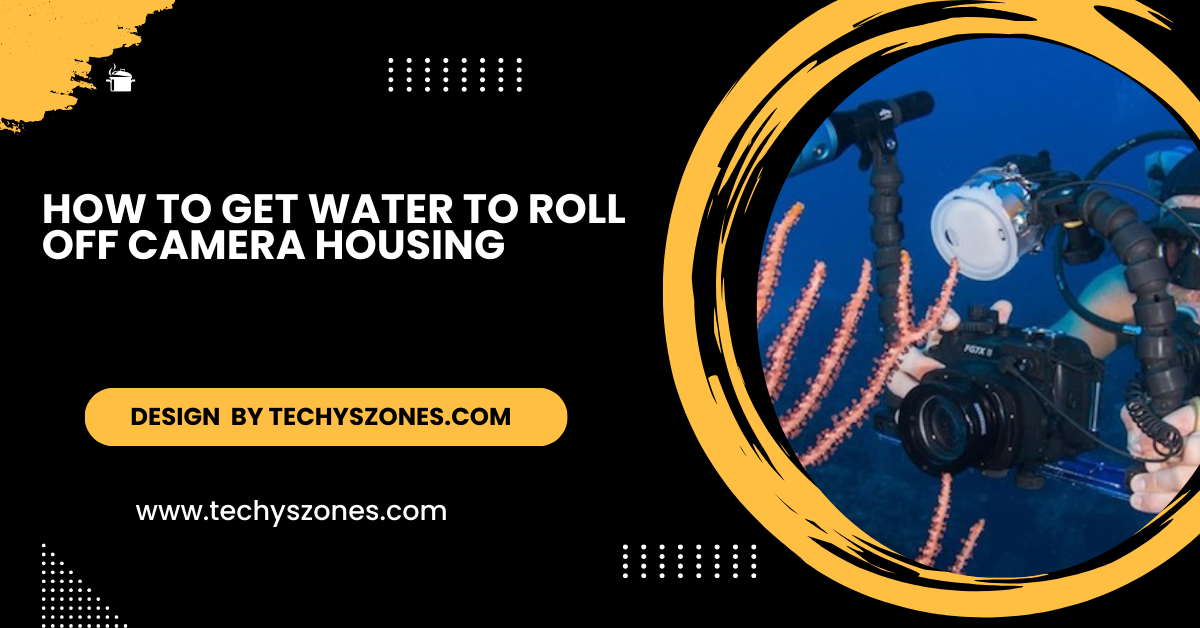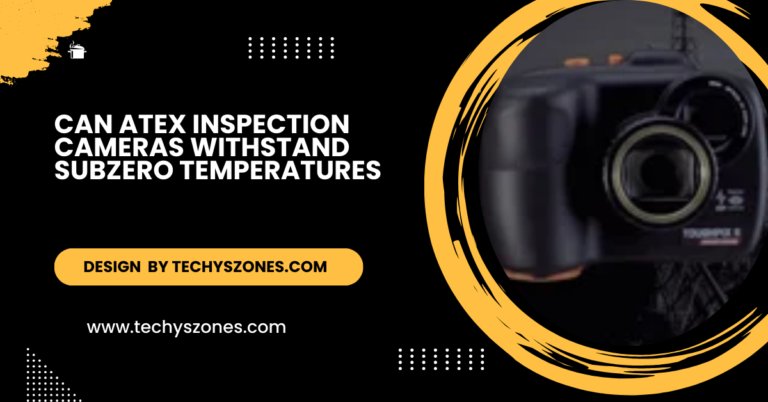How to Get Water To Roll Off Camera Housing – Essential Techniques And Tools!
Learn how to keep water off your camera housing with our comprehensive guide. Discover practical tips like using hydrophobic coatings, lens hoods, and waterproof housing for clear, dry shots.
In this article, we’ll explore various techniques to keep water rolling off your camera housing. Learn about hydrophobic coatings, lens hoods, and waterproof housings. With these strategies, you’ll be ready to shoot confidently in any weather.
Hydrophobic Coating: The Water-Repelling Powerhouse
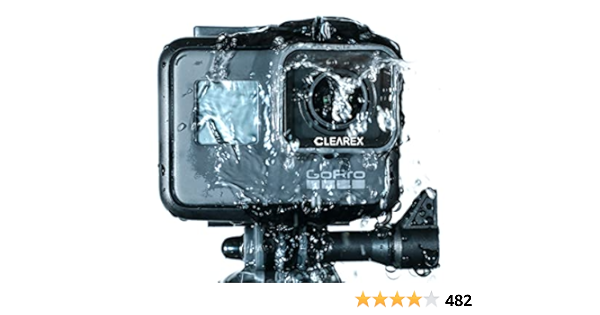
One of the most effective methods to ensure water rolls off your camera housing is to apply a hydrophobic coating. Hydrophobic coatings work by creating a surface that repels water, causing it to bead up and roll off instead of sticking to the camera housing or lens.
These coatings are readily available in the form of sprays, designed specifically for camera equipment.When applying a hydrophobic coating, make sure to thoroughly clean your camera housing to remove any dust, dirt, or oils that could affect the performance of the coating.
Once the surface is clean, spray the hydrophobic solution evenly across the housing. Let it sit and dry according to the product’s instructions.
Benefits of Hydrophobic Coatings:
- Water Repellence: Once applied, water forms beads and slides off the surface, keeping your camera dry and your shots clear.
- Long-Lasting: A good hydrophobic coating can last for several weeks or even months, depending on how often your camera is exposed to water.
- Easy to Reapply: If the coating starts to wear off, you can easily reapply it to maintain the water-repelling effect.
One drawback, however, is that hydrophobic coatings can sometimes wear off faster in harsh conditions, such as extreme cold or heat. Make sure to monitor your camera and reapply as needed, especially if you frequently shoot in these environments.
Also Read: Will Layfield Camera – A Deep Dive into the Will Layfield Camera!
The Importance of a Lens Hood: Added Protection from Water
A lens hood is a practical accessory that offers more than just protection from sun glare—it’s also highly effective at keeping water off your camera housing. Lens hoods create a physical barrier between the camera and external elements, reducing the chance of water droplets reaching the lens and housing. They’re especially useful when you’re shooting in light rain or near waterfalls, where water spray can easily affect your equipment.
Lens hoods are available in different sizes and shapes, depending on your lens type. Choosing the right one for your camera setup can make a significant difference. For example, wide-angle lenses usually require longer hoods, while telephoto lenses may need a more compact design.
Benefits of Lens Hoods:
- Versatility: Not only do they protect your lens from water, but they also reduce glare, making your shots clearer and more vibrant.
- Easy to Use: Lens hoods are easy to attach and remove, making them convenient for on-the-go photographers.
- Affordable Protection: They provide an inexpensive way to safeguard your camera housing from moisture and damage.
What Are the Benefits of Using a Lens Hood in Wet Conditions?
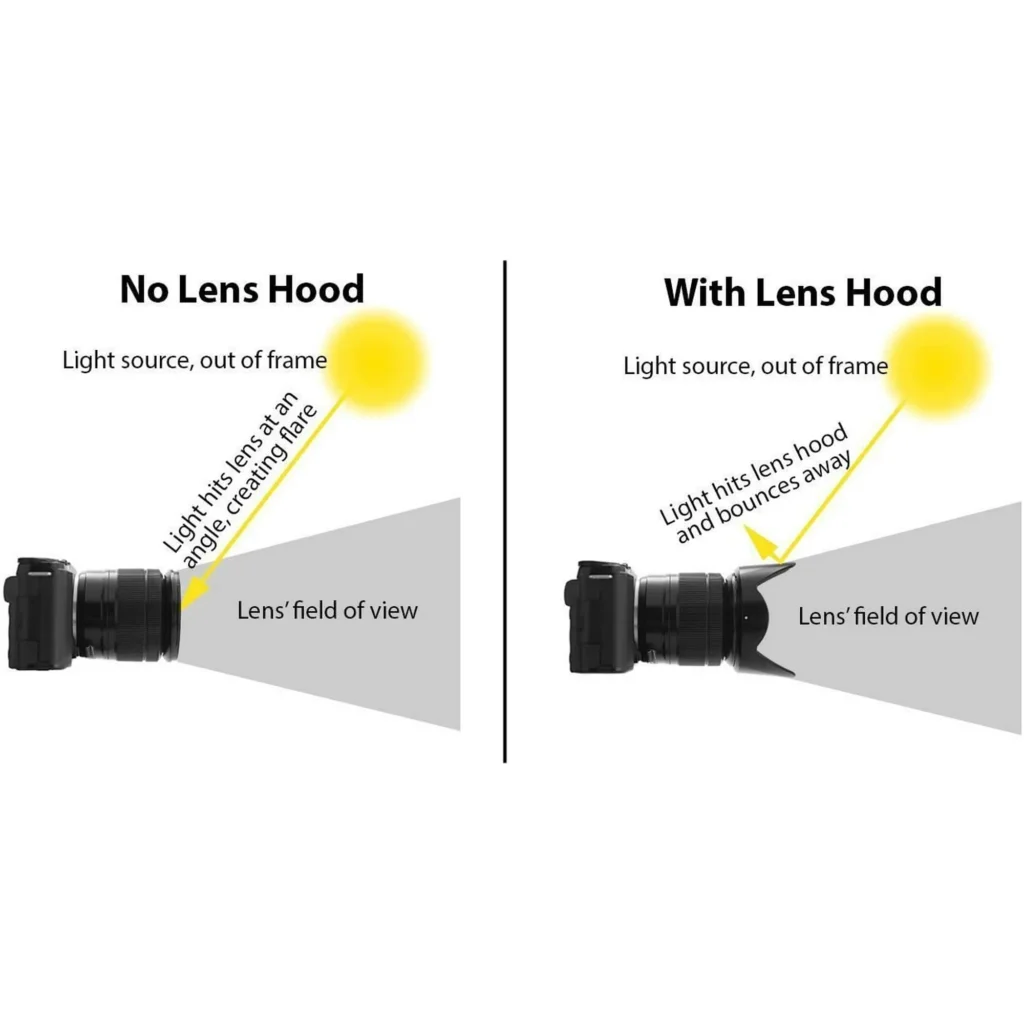
Protects Against Water Drops:
A lens hood acts as a physical barrier, shielding the lens from rain and water droplets. This helps prevent moisture from directly impacting the lens surface, which can lead to blurriness, streaks, or even damage over time. By keeping water at bay, you ensure that your photos remain clear and sharp, even in wet conditions.
Reduces Accumulation on Housing:
By extending out from the lens, a lens hood helps to deflect water and reduce the amount of moisture that accumulates on the camera housing and lens surface. This protection not only keeps your equipment drier but also minimizes the need for constant wiping, allowing you to focus more on your shots rather than maintaining your gear.
Blocks Dust and Debris:
In addition to water protection, a lens hood is effective at keeping dust, sand, and other debris away from the lens. This is particularly useful in environments where the weather might stir up particles that could scratch or damage your lens, ensuring that your camera remains in optimal condition.
Minimizes Lens Flare:
By blocking stray light sources and preventing direct light from hitting the lens, a lens hood helps to reduce lens flare. This results in clearer, more vibrant images with better contrast, especially in challenging lighting conditions where reflections or bright spots might otherwise interfere with your shots.
Improves Image Quality:
Overall, a lens hood enhances image quality by addressing multiple factors water drops, dust, lens flare, and direct light interference. This improvement in clarity and sharpness allows you to capture more precise and professional-looking images, making it a valuable accessory for any photographer working in wet or challenging conditions.
Also Read: What Camera Light Seal Should I Use For Canon A1 – Choosing The Right Seal!
Anti-Fog Solutions: Preventing Condensation Buildup
Water droplets aren’t the only moisture concern for camera housings condensation buildup can also be a problem, especially in humid or cold environments. When transitioning between different temperatures, such as moving from a cold environment to a warm one, condensation can form on your camera housing and lens, clouding your shots.
Using an anti-fog solution can prevent this. These solutions come in sprays or wipes and are designed to keep surfaces clear by creating a film that prevents fogging. Applying an anti-fog solution before a shoot in humid or cold conditions ensures that your camera remains clear and functional.
How to Apply Anti-Fog Solutions:
- Clean the Surface: Always start with a clean surface. Use a microfiber cloth to remove any dust or debris.
- Apply Evenly: Whether you’re using a spray or wipe, ensure that you cover the entire camera housing and lens evenly.
- Reapply as Needed: In very humid or wet conditions, you may need to reapply the solution periodically to maintain the anti-fog effect.
Microfiber Cloth and Maintenance: The Role of Regular Cleaning
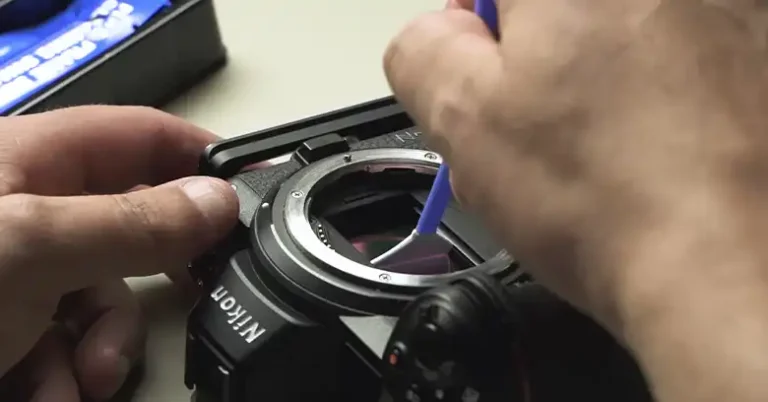
Regular cleaning and maintenance of your camera housing play a crucial role in preventing water from sticking to the surface. Over time, dirt, oils, and debris can accumulate on the camera housing, making it easier for water to cling to these spots. Using a microfiber cloth ensures that your camera housing remains smooth and water-repellent.
It’s also a good idea to invest in cleaning solutions designed for camera surfaces. These solutions, when used with a microfiber cloth, can remove oils and fingerprints that may affect water-repellence. Regular cleaning sessions will not only help with water control but also extend the life of your camera gear.
Benefits of Regular Cleaning:
- Prolongs Hydrophobic Coatings: A clean surface helps hydrophobic coatings last longer, as they can adhere better to a smooth surface.
- Improves Image Quality: A clean camera housing and lens ensure sharper, clearer images.
- Prevents Damage: Regular maintenance helps to prevent long-term damage caused by moisture, dirt, and debris buildup.
Waterproof Housing: The Ultimate Solution for Wet Environments
If you frequently shoot in heavy rain, underwater, or in environments where your camera is constantly exposed to moisture, a waterproof housing is the best long-term solution. Waterproof housings completely seal your camera, providing full protection from water, dust, and even impacts.
Waterproof housings are designed with specialized materials that not only keep water out but also feature smooth, water-repellent surfaces that allow water droplets to roll off easily. These housings come in various sizes, shapes, and designs, depending on your camera model and intended use.
Some are even equipped with additional features, like anti-fog inserts and reinforced buttons, to ensure full functionality in harsh conditions.
Advantages of Waterproof Housing:
- Total Protection: Keeps your camera completely dry, even in heavy rain or underwater conditions.
- Durability: Designed to withstand extreme environments, waterproof housings protect against more than just water, including dust and impacts.
- Water-Repellent Surface: Many waterproof housings are naturally water-repellent, allowing water to roll off effortlessly.
While waterproof housing may be a larger investment, it provides the ultimate peace of mind for photographers working in challenging, wet environments. It’s ideal for professionals who need reliable protection for high-value camera equipment.
FAQ’s
1.How does a lens hood protect against water?
A lens hood deflects rain and water droplets, preventing them from hitting the lens directly and causing blurriness.
2.Can a lens hood help with lens flare?
Yes, a lens hood blocks stray light, reducing lens flare and improving image contrast.
3.Does a lens hood prevent dust from damaging the lens?
Yes, it acts as a barrier, keeping dust and debris away from the lens surface.
4.How does a lens hood impact image quality?
It enhances image quality by minimizing water spots, dust, and unwanted light, resulting in clearer and sharper photos.
5.Is using a lens hood effective in windy conditions?
Yes, a lens hood helps protect against dust and debris that might be stirred up by the wind, keeping your lens clean and clear.
Conclusion
Whether you’re shooting in the rain, near a waterfall, or underwater, it’s important to keep water off your camera housing to protect your equipment and capture clear, crisp shots. From applying hydrophobic coatings and using lens hoods to regular maintenance and investing in waterproof housing, there are multiple solutions available depending on your needs and budget.

